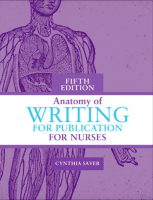You just found out you’ve been named as a defendant in a malpractice suit. A sense of dread comes over you as you desperately try to remember the patient, family, and situation involved. Your hospital’s risk manager calls you to come in and discuss the case.
Malpractice suits against nurses have risen significantly over the past decade. From 2000 to 2009, two in every 100 malpractice payments were generated from claims against nurses. (See Common causes of malpractice claims by clicking the PDF icon above.)
A nurse can be named specifically in a malpractice suit or can be implicated as an employee of an institution. In either case, nurses named in such suits commonly find the experience life-altering, particularly if the suit goes to trial. A malpractice lawsuit can strain one’s emotional and financial resources, so it’s in your best interest to do everything in your power to avoid one. This article gives you the knowledge to do so.
Elements of a malpractice claim
A malpractice claim has four elements, all of which must be met to substantiate the plaintiff’s claim:
- duty to the patient
- breach of that duty
- injury to the patient
- causal relationship between breach of duty and patient injury.
Only one of the two scenarios below includes all four elements.
Scenario 1: Failure to notify the surgeon
You’re working the night shift on the orthopedic unit, assigned to a patient recovering from repair of a left femur fracture. The patient’s left toes start to look pale and swollen, and she complains of new numbness of the toes. You report this finding in your change-of-shift report to the day nurse. While rounding the afternoon of the next day, the orthopedic surgeon notes the same deficits and immediately takes the patient to surgery. The surgical intervention comes too late and the patient suffers permanent neuromuscular damage to the leg, which necessitates lifelong pain medication and physical therapy.
This situation has all four elements needed to substantiate a malpractice claim against you and the day nurse.
- Duty to the patient: You and the day nurse were assigned to provide care for the patient.
- Breach of duty: Both of you were required to report changes in the patient’s condition to the surgeon.
- Patient injury: The patient sustained permanent neurologic damage.
- Causal relationship: If you and the day nurse had reported the changes to the surgeon immediately, the surgeon could have intervened sooner and prevented the damage.
Scenario 2: Mistaken diet order
Working on the telemetry unit, you’re assigned to a patient admitted for exacerbation of heart failure due to new-onset atrial fibrillation. While entering the patient’s diet order, you fail to initiate his low-sodium (2 g) diet. The next day, his atrial fibrillation accelerates into a rapid ventricular response; he decompensates to the point of requiring intubation and transfer to the critical care unit. There he undergoes cardioversion, after which a permanent pacemaker is inserted. He recovers within 24 hours.
In this situation, only three of the four malpractice elements are met:
- Duty to the patient: You were assigned to provide care for the patient.
- Breach of duty: You were required to enter a correct diet order for the patient.
- Patient injury: The patient required intubation, permanent pacemaker insertion, and transfer to a higher level of care.
- Causal relationship: The main cause of the patient’s deterioration was rapid atrial fibrillation, not the mistaken diet order.
Although you breached your duty and the patient was injured, your breach didn’t cause the injury.
Common categories of malpractice claims
Six categories of nursing malpractice claims have been identified:
- failure to follow standards of care
- failure to use equipment in a responsible manner
- failure to assess and monitor
- failure to communicate
- failure to document
- failure to act as a patient advocate or follow the chain of command.
Each category is described below using a case-based approach. The cases show how diverse malpractice claims can be.
Failure to follow standards of care
Many sources of standards of care exist. Written standards are important in evaluating whether nursing care was adequate, but they’re not always available or necessary.
Scenario: During the 11 p.m.-to-
7 a.m. shift, you’re assigned to care for Mr. Ross, a telemetry patient who is supposed to receive medication at midnight. Giving his medication in a timely manner is a high priority; guidelines from the Centers for Medicare & Medicaid Services state that medications should be administered within 30 minutes before or after the time specified.
When you start to open the door to Mr. Ross’s room, you think you hear him engaging in phone sex. You quietly shut the door and go to your next patient without communicating with the patient or observing him visually. About 15 minutes later, you return to his room, where you find his skin is bluish and he is in full arrest. You call a code; he is resuscitated and transferred to the critical care unit but suffers permanent neurologic deficits.
Commentary: What’s the standard of care in this situation? No written policy or procedure addresses this specific situation, nor does any written standard of care apply. But an expert opinion of what the standard of care would be in this situation does exist. As in many other circumstances in which no written policy exists, the standard of care is what a reasonably prudent nurse would do. In this case, a nurse expert may testify that a reasonably prudent nurse would have communicated with the patient at first contact to establish the true nature of the noise she was hearing and verify that he was alert, oriented, and breathing. This opinion would become the standard of care. (See Sources of standards of care by clicking the PDF link above.)
Failure to use equipment in a responsible manner
Failing to use equipment responsibly can result in patient harm. Altering equipment falls into this category, as depicted below.
Scenario: You’re caring for Joseph Brunner, who has a chronic back disorder and has been prescribed high-dose opioids administered via patient-controlled analgesia (PCA). The patient-care technician summons you to Mr. Brunner’s room, stating the patient isn’t breathing. You call a code, but Mr. Brunner can’t be resuscitated. The charge nurse notifies the supervisor, who in turn notifies the coroner.
You and a colleague begin removing equipment from Mr. Brunner. You discard the opioid remaining in the PCA without noting the amount discarded, and return the PCA to central supply for cleaning. The coroner determines an autopsy is needed because of the abrupt nature of the death; the physician refuses to sign the death certificate due to concerns over PCA tampering. Because the equipment wasn’t preserved, it wasn’t available as evidence to help the coroner evaluate Mr. Brunner’s death.
Commentary: In this situation, although you may have operated the PCA equipment properly, you failed to preserve it in a way that would have helped determine the cause of death. Also, by not documenting the amount of opioid drug wasted from the PCA, you violated Food and Drug Administration rules on opioid documentation.
Failure to assess and monitor
Most of the time, documentation supports that nurses are performing routine assessments and monitoring patients according to policy and written physician orders. But based on a nurse’s clinical judgment, a patient’s condition may warrant more frequent assessment and monitoring. You never need an order to intensify assessment and monitoring of a patient based on your judgment. What’s more, you should increase monitoring if you’re concerned about a potential patient problem.
Scenario: In an acute rehabilitation unit, you’re caring for Sally Holderfer, who recently suffered a cerebrovascular accident and has been making a good recovery. The physician orders routine vital-sign assessment and neurologic checks every 4 hours. As you’re performing the patient’s focused assessment at 1200 hours, she complains of a slight headache and states she had trouble remembering where she was for a moment. You give her acetaminophen for her headache and continue with the rest of your assessment. At 1600 hours, you return to her room for another focused assessment and find her unresponsive. You call the neurologist, who sends her for a computed tomography scan; the scan shows she has suffered a hemorrhagic stroke.
Commentary: Although the physician ordered routine vital signs and neurologic checks, it was your responsibility to further evaluate and monitor Mrs. Holderfer. You should have evaluated the effect of pain medication and reported your abnormal 1200 findings to the neurologist. Given the abnormal findings, you also should have performed a more detailed neurologic examination to intensify your monitoring, regardless of physician orders.
Failure to communicate
Failure to communicate or to provide timely communication is a major factor in some failure-to-rescue cases and plays a role in a significant number of malpractice claims. A typical result of failure to communicate is a delay in care, which can be relatively significant or even deadly.
Scenario: You’re providing care for Mr. Defazio, a patient admitted to a medical unit with pneumonia. After rounding, the physician determines the patient is ready for discharge today and writes discharge orders at 0830 hours. Mr. Defazio states he can’t get transportation home until his partner finishes work at about 1800 hours. You continue your day, providing care for other patients and monitoring Mr. Defazio as well, even though his discharge papers have been signed. At 1600 hours, you decide to spot-check him. You find his heart rate slightly elevated at 112 beats/minute, note slight shortness of breath on exertion, and see that his oxygen saturation has dropped from normal to 89%. You call the physician and report only that the patient is slightly short of breath on exertion; the physician instructs you to continue the discharge procedure.
Mr. Defazio is discharged at 1800 hours to his partner. On arriving home, he collapses on the doorstep. His partner calls 911, but the patient can’t be resuscitated. On autopsy, a pulmonary embolism is found to be the cause of death.
Commentary: Nurses must work to resolve all aspects of abnormal patient assessments. In this situation, your failure to communicate the patient’s full condition led to faulty continuation of Mr. Defazio’s discharge order by the physician. You also failed to appreciate the full picture of the patient’s deterioration, resulting in a fatal event. What’s more, you failed to follow the standard of care, and also failed to act as patient advocate and follow the chain of command (discussed later).
Failure to document
Changes in the work environment can make documentation a significant challenge for nurses. With more nursing documentation being done electronically in checkbox fashion, information that sheds light on the full provision of patient care may be lost. Also, the electronic health record may be cumbersome to use and may pose a challenge for some healthcare providers looking for information entered by other healthcare team members. If no documentation exists to refute another care provider’s claim, this can raise the risk of malpractice claims.
Scenario: You’re caring for Mrs. Spangler, a patient in the surgical unit who underwent a colon resection 3 days ago. During your assessment at 0400 hours, you find she has a distended abdomen and “swooshing” bowel sounds. Immediately concerned about a perforation, you begin more intensive monitoring and assessment, and call the surgeon to report your findings. When the surgeon responds, you provide her with complete findings from your 0400 assessment. The surgeon says she’ll be in to see Mrs. Spangler, and you end the call. In the meantime, another patient becomes short of breath, so you ask a nurse colleague to take over Mrs. Spangler’s vital-sign monitoring and assessments. Your short-of-breath patient deteriorates, requiring you to arrange for his transfer to the critical care unit.
When you finally return to your unit at 0700 hours, you ask for an update on Mrs. Spangler and learn the surgeon hasn’t arrived yet. You page her STAT. She arrives within 30 minutes, determines Mrs. Spangler has a bowel perforation, and takes her to emergency surgery. Although the patient survives surgery, she becomes septic within 2 days; eventually she is removed from life support.
Nearly 2 years later, Mrs. Spangler’s family files a malpractice suit. You try to recall details of that night but have difficulty remembering. You know you notified the surgeon, but have no specific recollection of your conversation with her, which you didn’t document at the time. What’s more, the surgeon asserts you didn’t call her at 0400 hours because if you had, she would have come right away, just as she did when you called at 0700 hours. You believe you did everything in your power to get the proper care for Mrs. Spangler, but because you don’t remember all the details of the situation and failed to document your communication with the surgeon, you’re likely to be held responsible for the patient’s death.
Commentary: At the end of a busy shift, documentation may get the short end of the stick. And understandably, providing patient care takes priority over documentation. But if you don’t document your communication with other care providers and ensure adequate follow-up, chances are you’ll be held responsible for the patient outcome. (See Documenting your communication by clicking the PDF icon above.)
Keep in mind that a long time may elapse between a specific patient incident and filing of a malpractice claim. Statutes of limitations may allow lawsuits to be filed up to 2 years or more after the incident; even more time may pass before you give your side of the story. In the interval, you may have provided care for hundreds of patients—so the odds you’ll remember key details from a bygone situation aren’t good. If another person involved in the incident contradicts your recollection and you lack documentation to support your position, you could end up being found responsible.
Failure to act as a patient advocate or follow the chain of command
Failure to act as a patient advocate or follow the chain of command is a growing basis of malpractice claims against nurses. Nurses have unique skills and knowledge that enable them to detect a patient’s deterioration early and allow quick treatment. These specialized skills create a heavy responsibility for nurses to secure proper treatment for patients.
Some nurses believe this responsibility is unfair. But it’s akin to another nursing responsibility: to challenge physician orders you believe are improper. Would you implement an order that reads “morphine 50 mg I.V. push”? Of course not, because you know this would be a lethal dose. Your challenge of such an order represents the crux of patient advocacy. While you’re not expected to differentiate competing medical regimens for a given patient (such as arthroscopy vs total knee replacement), you’re certainly held to the standard of securing treatment for a deteriorating patient condition.
Scenario: Cliff Ericson is admitted to a progressive care unit for exacerbation of chronic obstructive pulmonary disease. After he is rescued successfully from the exacerbation, his treatment plan is revised to prevent subsequent exacerbations. You respond to his call light and find him duskier than before and having difficulty speaking due to increased shortness of breath. Also, his oxygen saturation has dropped significantly and he is tachycardic. You increase oxygen flow at the bedside, call for respiratory therapy STAT, obtain an arterial blood gas (ABG) sample per standing protocol, and call the physician to provide a complete report of your findings and actions.
The physician agrees with the interventions you have provided and tells you to continue the current therapy. You express your concern to the physician, stating that you believe you’ve exhausted bedside therapies with no improvement in Mr. Ericson’s condition or ABG findings. You request the patient be transferred to the critical care unit for possible intubation. The physician declines. You repeat the request, emphasizing your rationale and the patient’s need for a higher level of care. The physician again declines.
You and the respiratory therapist stay with Mr. Ericson, who continues to deteriorate neurologically. After 35 minutes, he codes, is intubated, and is moved to the critical care unit. Although his ABG findings improve, his neurologic status doesn’t respond positively. A CT scan done 48 hours later notes anoxic encephalopathy. He sustains permanent neurologic impairment and can’t live without 24-hour assistance.
Commentary: In this case, your responsibility was to activate the chain of command and see it through until the patient’s condition received proper attention. You should have communicated thoroughly with your direct supervisor or a higher-level supervisor if needed, until the desired result was achieved. The chain of command may involve both nursing and medical staff. Facilities typically have policies regarding the sequence of actions to take when initiating the chain of command.
Should you carry your own malpractice insurance?
Nurses often ask if they should carry their own malpractice insurance—
and if they do, whether this will increase the chance they’ll be named in a lawsuit. While it’s true that carrying your own malpractice insurance could make you somewhat more likely to be named, no good evidence exists that this small likelihood outweighs the benefits of having your own insurance.
Nurses commonly are named in lawsuits brought on behalf of patients. Healthcare institutions carry their own malpractice insurance and can provide nurses with representation as part of the institution’s own defense. But in some cases, the nurse’s interests may conflict with those of another employee (for instance, a resident) named in the suit. If this occurs, it’s certainly to your benefit to have your own lawyer—one who’s dedicated solely to your defense and will work solely for you. (See A malpractice suit step by step by clicking the PDF icon above.)
Recommendations
The following recommendations can help reduce your chance of being named in a malpractice claim.
- Know and follow your state’s nurse practice act.
- Know and follow your facility’s policies and procedures.
- Stay up-to-date in your field.
- Assess your patient according to policy and physician orders, and more frequently as needed based on your nursing judgment.
- Report abnormal assessments and laboratory values promptly. Document your reporting and follow-up.
- Follow up on nursing assessments and interventions that you delegate to others.
- Communicate openly and factually with patients, families, and other healthcare providers.
- Document your nursing care factually and thoroughly.
- Promptly file incident reports for deviations in care. Don’t record in the patient record that an incident report was filed.
- Ensure that your documentation reflects the nursing process (assessment, intervention, evaluation).
- Never chart ahead of time.
Nurses are with patients around the clock, collectively speaking. This makes us responsible for driving the plan of care, complying with standards of care, assessing patients according to orders and professional judgment, providing proper communication, documenting all care and pertinent communications, using equipment responsibly, and acting as patient advocate. In the end, it’s the patient who matters, and it’s the patient who benefits from your expertise. Delivering excellent patient care goes a long way toward avoiding malpractice claims.
Selected references
Classen JL. Is failure to rescue really a failure to communicate? Champion the move from reactive process to proactive model. Nurs Manage. 2010 Jul;41(7):38-41.
Croke EM. Nurses, negligence, and malpractice. Am J Nurs. 2003 Sep:103(9):54-63.
Painter LM, Dudjak LA, Kidwell KM, Simmons RL, Kidwell RP. The nurse’s role in causation of compensable injury. J Nurs Care Qual. 2011 Oct-Dec;26(4):311-9. doi:10.1097/NCQ.0b013e31820f9576.
Reising DL, Allen PN. Protecting yourself from malpractice claims. Am Nurs Today. 2007 Feb;2(2):39-44.
U.S. Department of Health and Human Services; Health Resources and Services Administration. National Practitioner Data Bank Combined Annual Report: 2007, 2008, and 2009. www.npdb-hipdb.hrsa.gov/resources/reports/2007-08-09NPDBAnnualRep.pdf. Accessed November 17, 2011.
Deanna L. Reising is an associate professor at Indiana University School of Nursing in Bloomington. The authors and planners of the CNE activity have disclosed no relevant financial relationships with any commercial companies pertaining to this activity.



















3 Comments.
What a great and helpful article. A deep thank you to the author! Brilliant job.
I reviewed the article with my students in post conference today and it really helped drive home the importance of many of the topics I emphasize in the clinical practice setting. This should be required reading for all nursing students and practicing nurses. Thank you for making what can be an abstract topic very real and applicable!!
I really enjoyed this article, and am keeping the hard copy I received in the mail for reference. Very informative and helpful. Thank you!